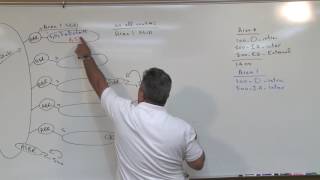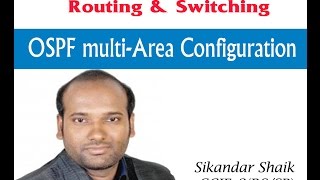Saturday, 20 December, 2025г.
















Где искать: по сайтам Запорожской области, статьи, видео ролики
пример: покупка автомобиля в Запорожье
OSPF AS External LSA (Type 5 LSA)
*** EDIT: The line should say "E-bit: If E=0 ---o E1, if E=1 ---o E2" ***
Hello everyone and welcome to Network Playroom! In this video, we're going to look at the OSPF Type 5 LSA or the AS External LSA.
The AS External LSAs are originated by ASBRs, and they describe destinations external to the AS. AS-external-LSAs usually describe a particular external destination. For these LSAs the Link State ID field specifies an IP network number. AS-external-LSAs are also used to describe a default route. When describing a default route, the Link State ID and the Network Mask are both 0.0.0.0.
The AS External LSA fields are:
o Network Mask is the IP address mask for the advertised destination.
o E, or External Metric bit, specifies the type of external metric to be used with this route. If the E-bit is set to 1, the metric type is E2. If the E-bit = 0, the metric type is E1.
o Metric is the cost of the route, as set by the ASBR.
o Forwarding Address is the address to which packets for the advertised destination should be forwarded. If the forwarding address is 0.0.0.0, packets are forwarded to the originating ASBR.
o External Route Tag is an arbitrary tag that may be applied to the external route. This field is not used by the OSPF protocol itself, but is instead provided for external route management.
o TOS-specific information may also be included, for backward compatibility with previous versions of the OSPF specification. Again, Cisco supports only TOS = 0. So, we're not gonna worry about these fields.
In my last video, I mentioned that the Type 4 and Type 5 LSAs tie together. So, basically the Type 5 AS External LSA tells you how to reach external networks and the Type 4 ASBR Summary LSA tells you how to reach the ASBR, who advertised them.
The command show ip ospf database external is used to display AS External LSAs.
Thank you for watching!
Packet capture: https://www.cloudshark.org/captures/0062204357ab
Теги:
network playroom ospf cisco ospf ospf lsa type 5 ospf as external lsa ip networking cisco training cisco certification ccna training ccie ccie training
Похожие видео
Мой аккаунт


 У вашего броузера проблема в совместимости с HTML5
У вашего броузера проблема в совместимости с HTML5


